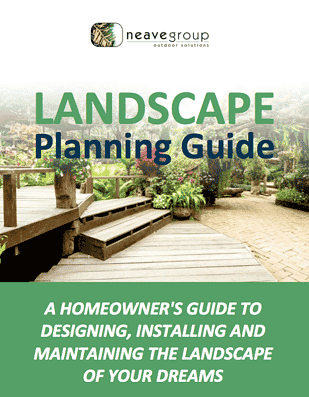Wide open space is beautiful, but sometimes, you need to divide it. Separate it. Section parts off. Then, it’s time for a fence. Or do you need a wall? Wall vs. fence — the age old backyard battle.
They each can do the job. But which one you choose depends on the task at hand, your budget, the landscape, and even the design of your house. Let’s take a look at free-standing walls vs. traditional fences, and how to choose which one is right for your property.
Check Zoning Regulations
Your first step is to check the zoning regulations in your town. They might make the decision for you. Some municipalities regulate the height and location of walls and fences within building setbacks and the town’s road alignment right of way. If you’re working with a qualified landscape designer, he or she will know the regulations specific to your state.
Also, it’s important to note that if you’ll be enclosing a swimming pool, specific rules apply. Each state has its own regulations regarding pool enclosures. Again, a landscape designer will know the regulations or can find out.
In New York and Connecticut, for example, pool code enclosures must have at least 48 inches between the top of bottom rails with no more than 2 inches of space at the bottom. In addition, vertical spacing can be no larger than 2 inches. All gates have to be self-closing and swing out away from the pool. The height of the self-closing latch must fall within specified dimensions determined by the state’s pool enclosure code.
Consider Your Home’s Architecture
What kind of house do you have? This should be one of your first guides to choosing a wall vs. fence.
Say you have a ranch-style home with vinyl siding. Erecting a stone wall here would look awkward and out of place. Maybe you have a beautiful old stone house with a slate roof. In that case, putting up a white vinyl fence would look equally wrong.
Bottom line: a fence or wall should feel like an extension of your architecture. But it shouldn’t steal the show. You want to notice the beauty of your home first, not the fancy fence.
Sometimes a fence needs to fade into the background. If your decorative white fence stretches out from either side of your house, but part of your property goes through the woods, you wouldn’t want to continue the white fence into the woods. It would stand out too much and detract from the natural setting.
Instead, you might transition to chain link fence through the wooded section. It would blend in nicely, but still provide privacy and security. Also take into consideration the lay of the land. A wall could traverse hilly topography better than a fence, which is harder to negotiate grades.
The Allure Of A Wall
Free-standing walls range in average height from 2 feet to 6 feet, and can be constructed to complement your home. Brick, mortared stones and concrete are all popular choices.
A wall has a stronger feel, physically, than a fence. The notion of a solid wall is enduring, and that’s appealing to people. They can be used in curved, as well as straight designs.
There are stone walls in Europe that have been standing for 2,000 years. So a wall will be around for a long time. It’s an investment you’ll likely pay for once, with no worry about replacement in a few years.
But don’t plan on changing your mind. If you have plans for home additions or major property enhancements down the road, the permanence of a wall is not your best bet. So plan ahead.
Stone Means Cold Hard Cash
In general, a wall will cost you more than a fence. They’re labor intensive, requiring more skill and more time to build.
A wall higher than 3 feet tall usually has to be engineered with a concrete footing. Footings are an important part of foundation construction. They’re typically made of steel reinforced concrete that is poured to below the frost line. The purpose of footings is to prevent frost heave and to disperse with weight of the wall.
This type of secure footing is crucial with a stone wall. Unlike a wood or vinyl fence, if a stonewall topples, it has the potential to cause serious personal injury and or property damage.
The Lowdown On Low Walls
Sometimes it isn’t privacy or security you need. You just need a sense of separation. A low stone, brick or concrete wall can work nicely here. A wall of about 18 inches tall works great to divide space in a landscape.
Think about a low stone wall separating a terrace from a pool area. It acts as a separation between two outdoor rooms, without closing them off. Bonus: It also provides seating.
A low, curving wall offers a sense of interest and a sense of rhythm as it moves through the landscape. A low wall can also work great as fire pit seating. A low stone wall around a vegetable garden offers an old world look. In addition, stone absorbs heat, which helps a garden to remain somewhat cozy in chilly weather.
This type of wall is often constructed on a ¾-inch crushed stone footing — if drainage is good. In addition, this type of natural stone wall should be constructed with a concrete core.
Wall Vs. Fence? Let Neave Help You Decide
With more than 40 years of experience in the field, Neave Masonry’s reputation is as solid as, well, a stone wall.
Their design team can help you decide between stone wall vs. fence based upon the style of your home, site conditions and budget. If a fence is for you, the experts at Neave Carpentry can take over the job. Or, if you prefer the strength and age that stone walls can bring to your property, Neave’s masons can make that dream come true as well.
One of the many benefits of working with NeaveGroup Outdoor solutions is that you also have access to their other related divisions. Whether you decide on a wall or a fence, the project might also include landscape design and planting, pool design and construction, irrigation and lighting. The professionals at other Neave Group branches are experts in their divisions, too.
Your single point of contact at Neave will be able to schedule and coordinate any services you need when considering the entire scope of your project. If you’re in the Hudson Valley, call us at (845) 463-0592. If you’re in Westchester County, call (914) 271-7996; from Connecticut, dial (203) 212-4800. Or, fill out our simple web form, and we’ll contact you about setting up your free consultation.























